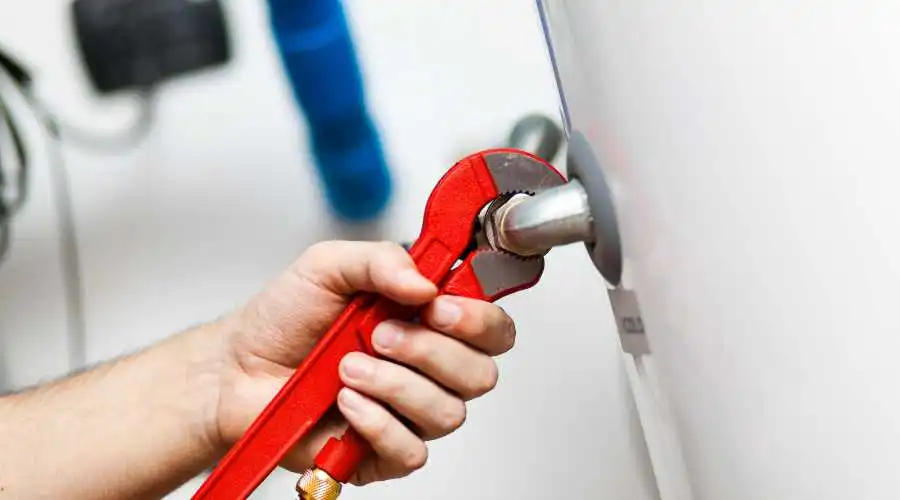It’s also a good idea to think about your plumbing system as the air begins to become cooler and the leaves start to clearly change colors. Temperatures start to drop quickly in the fall, which causes plumbing and water systems to work more slowly and clog up water drainage. It’s critical to take the required actions to prepare your plumbing for the challenges of autumn.
Some of the plumbing problems you might have include these:
Burst and Frozen Pipes
The weather in the US can be harsh. Authorities in New Jersey responded to more than 200 calls from residents who reported no water due to frozen pipes during the winter of 2019. Autumn temperatures can drop as low as -3° C. Plumbing systems can suffer damage from extremely low temperatures, which can result in their freezing and bursting.
Faulty Heating Systems
The temperature of the earth and the pipes underground are impacted by the chilly autumn weather. The heating system receives cold water, which forces it to work harder to make up for the temperature loss. If this problem persists, it could overwork your water heater and cause system failure.
Unfortunately, having a malfunctioning water heating system in the fall is not a smart idea. Your water supply is impacted, and as plumbers are fully booked for other repair projects, there is a chance that repairs will be delayed.
Drain Obstruction
The changing leaves in the autumn are a beautiful sight and provide a charming setting. However, many people are unaware that the plumbing systems in their homes are also impacted by the falling leaves, which is why there are more drain blockages reported this time of year. Fallen leaves can clog your plumbing and pile in gutters.
How to Get Your Plumbing System Ready for Fall
Here are some crucial actions to take to lessen the likelihood of plumbing issues this season:
#1: Clean Your Drain Pipes and Gutters
Water damage brought on over the previous ten years by aging infrastructure or insufficient upkeep. It represents 50% of the whole cost of claims in Quebec. In the upcoming years, a rise is also anticipated. Similar trends can be seen in other locations of Canada.
Your gutters and drainpipes may have major issues as a result of falling leaves. Their responsibility is to stop spills from happening on the home’s roof and foundation. Maintaining them will prevent obstructions and potential structural damage.
#2: Maintain Water Heaters
Make sure there are no leaks by inspecting your water heater. It’s a good idea to have a plumber inspect your water heater before it gets too cold because usage of water heaters increases in the fall. Water heaters should be serviced before temperatures drop to avoid delays and expensive repairs.
Tasks involved in water heater inspections include:
- Evaluation of the fuel gas piping for the water heater
- Complete examination of fuel, taking into account labels and fuel type
- Checking the installation to make sure the pipework and other components are appropriate
- Checking the drip legs or sediment traps that are designed to catch debris or moisture in the pipes before it reaches the burner
- Measuring the expansion of water.
#3: Disconnect Outside Hoses
In the winter, outside hoses shouldn’t be left out in the elements. When temperatures drop, both the container holding the water and the water itself expand. The majority of hoses are made of pliable materials, which prevents rapid failure. The ice would take some time to thaw, so by the time the ice melts, the hose would have already sustained enough damage.
The expansion will also cause faucets that the hose is attached to to freeze and break. The hoses should be disconnected, any remaining water should be drained, and they should be kept indoors until it becomes warmer.
#4: Turn Off the Inside Lights
An interior shut-off valve, which connects to the exterior plumbing system, should be present in your home. To drain the water, it would be practical to close the internal valve and open the outdoor faucet valve. Your plumbing system will be less prone to break if there is no water to freeze.
#5: Seal the Gap
Calling your neighborhood plumber on a frequent basis will help you spot any issues with your plumbing system. These sharp-eyed professionals can identify any loopholes that could lead to problems. Over time, there will inevitably be cracks between the pipes and the walls. During the chilly months of autumn and winter, the breach would permit cold air to enter and lead to the freezing of pipes.
These may also result in a sharp increase in your utility expenditures during the warmer spring and summer months. The pipes can be sealed using a variety of methods, including caulking, insulation, and weather stripping, with the assistance of experts.
#6: Insulate Your Pipes
Winter can cause serious damage to your plumbing system, especially if Canada’s autumn is occasionally very cold. You wouldn’t want to hurriedly look online for “plumbers near me” as the first snowflakes start to fall.
Installing rubber insulation inside your pipes as part of annual plumbing system maintenance can guarantee that only warm water flows, even during the colder months. Your outdoor pipes are most likely to freeze, therefore in order to avoid having to spend a fortune replacing them once the world thaws out, protect them before the season changes.
Adapt to the season’s changes and get ready for any upcoming changes. Early actions can help protect your pipes, maintain your comfort, and reduce the need for future repairs and replacements. You may avoid a variety of annoyances by planning ahead and autumn-proofing your plumbing system.
Making contact with experts who can assist in preparing your plumbing system for the next cold days is the key to your piece of mind. BJC Clifton Plumbers is available for both routine checkups and maintenance as well as urgent plumbing needs. Get in contact with us if you need professional assistance.




